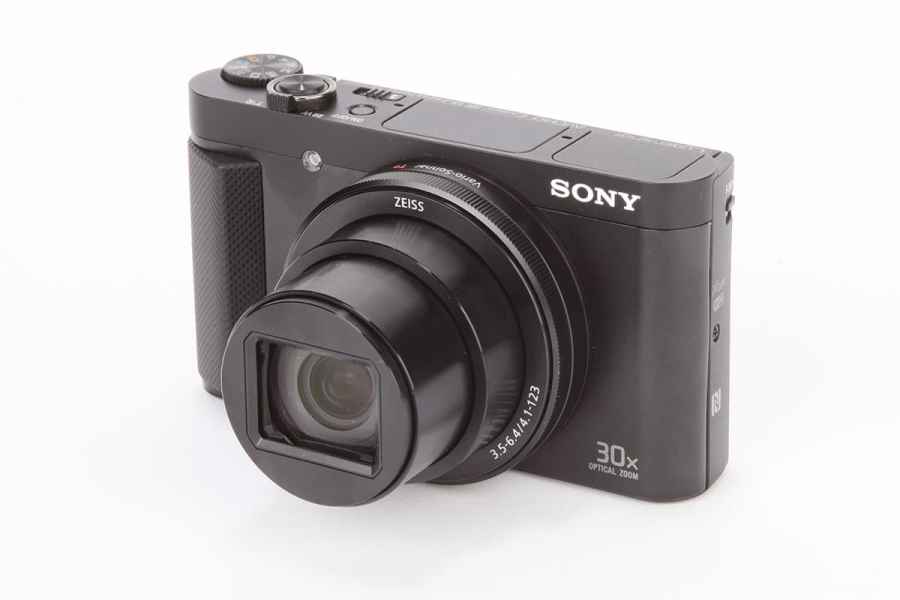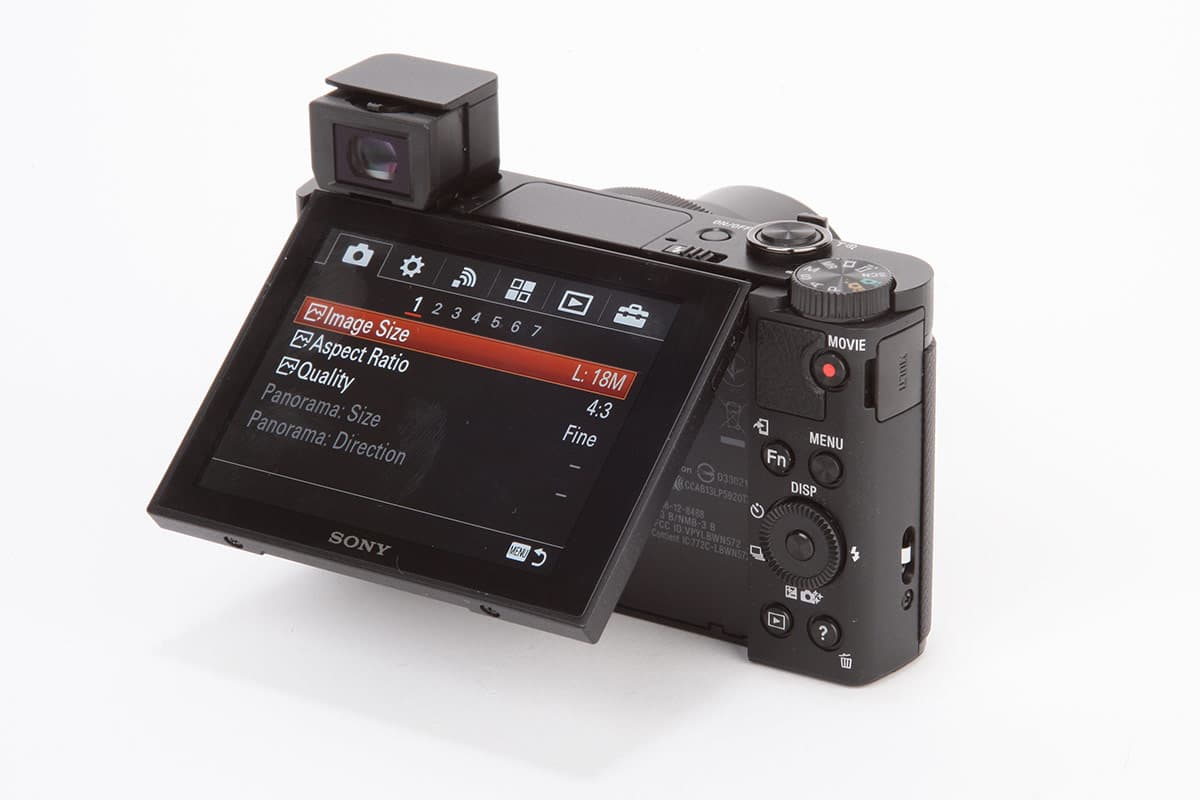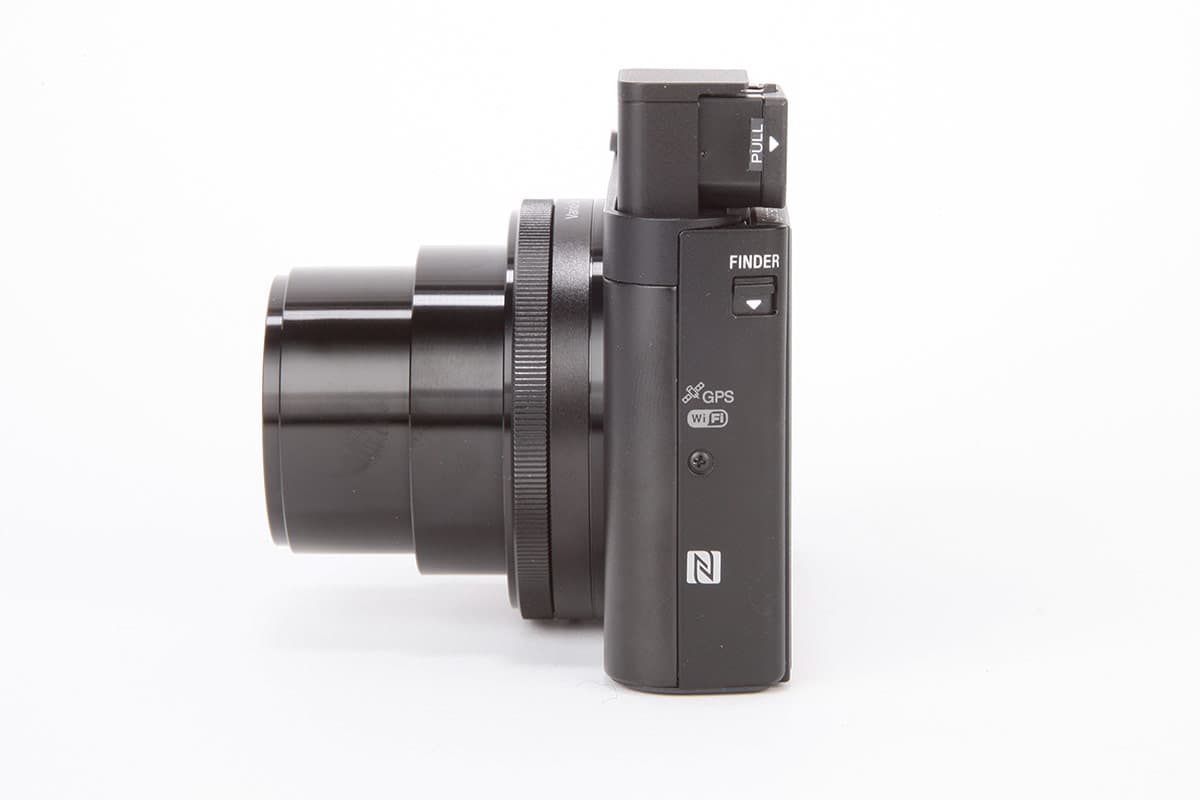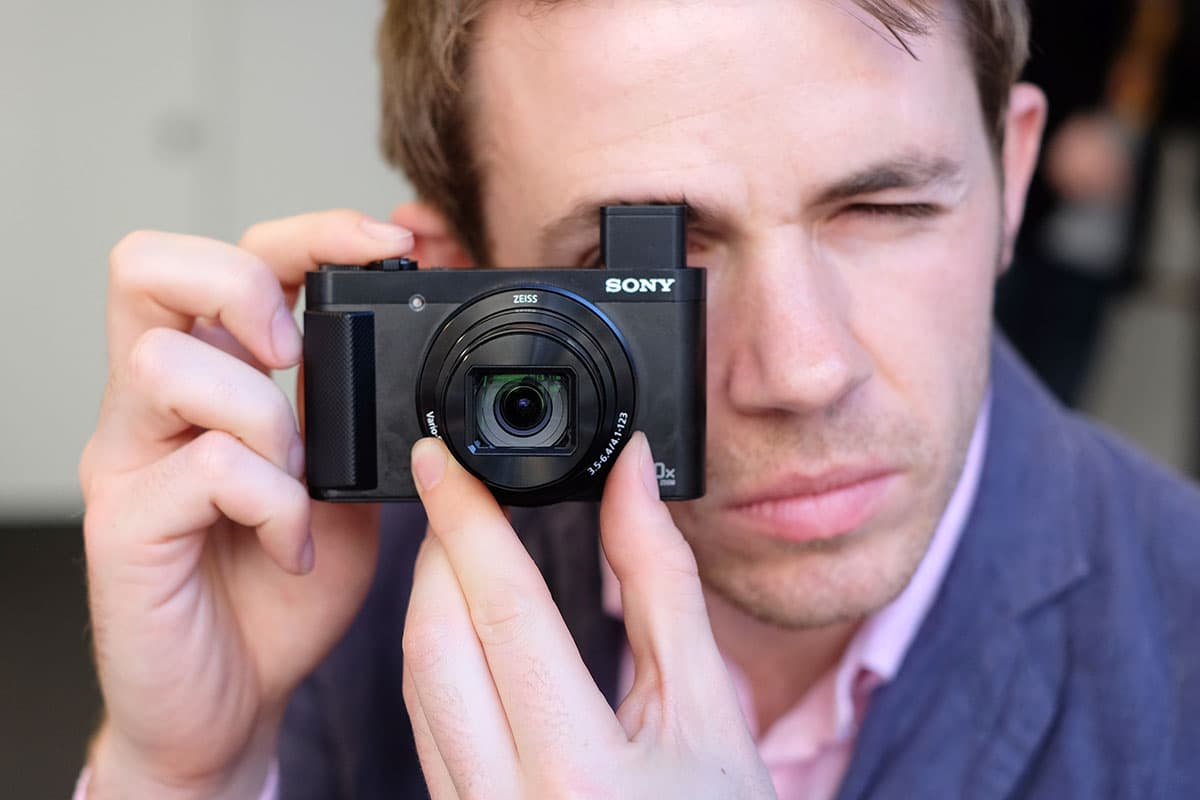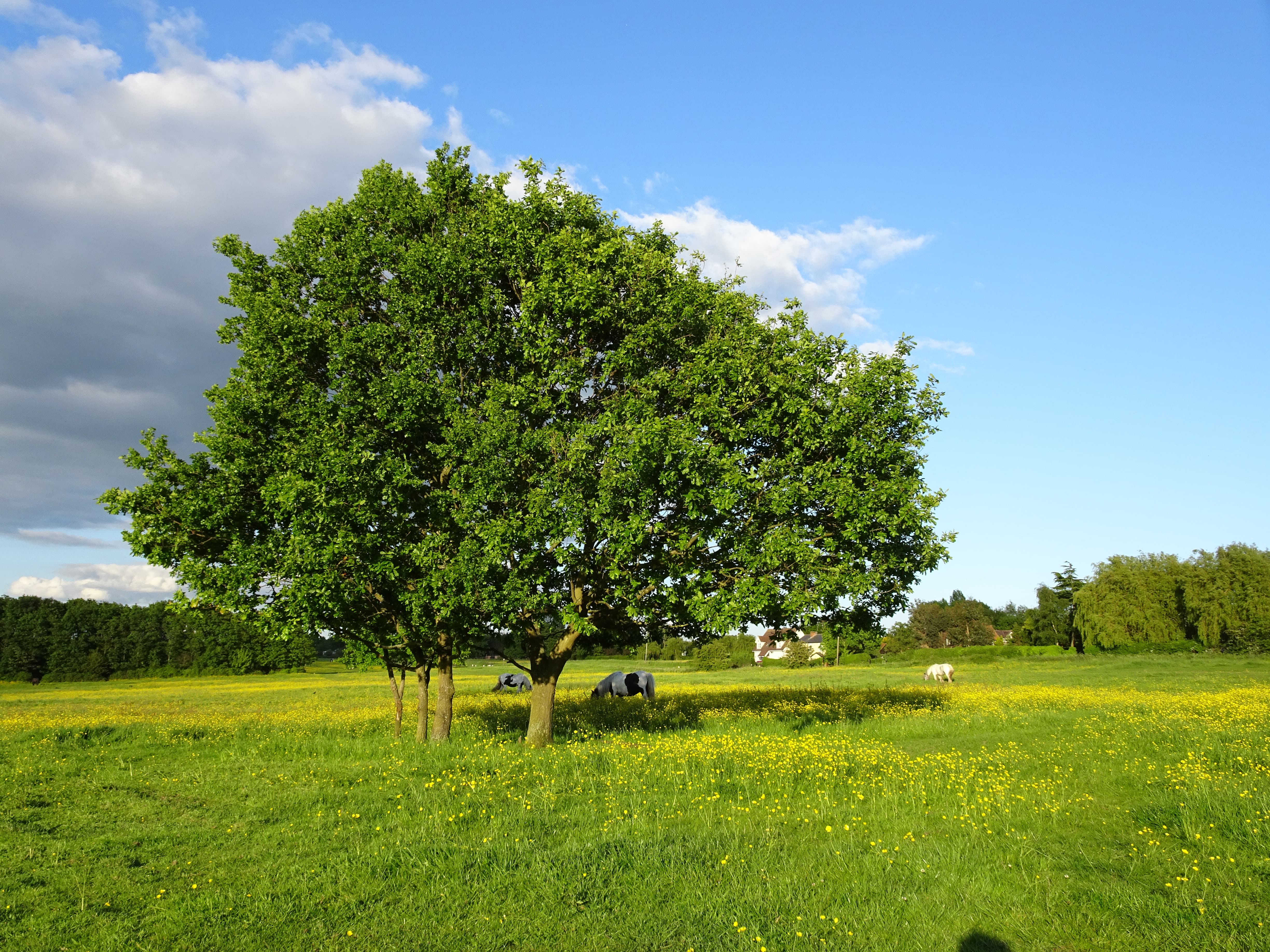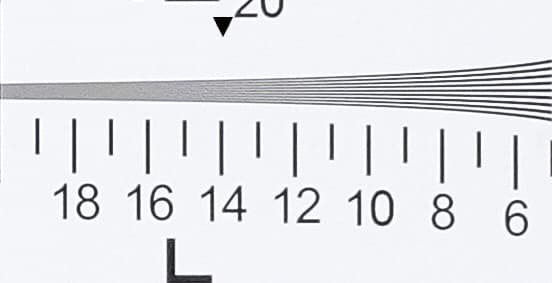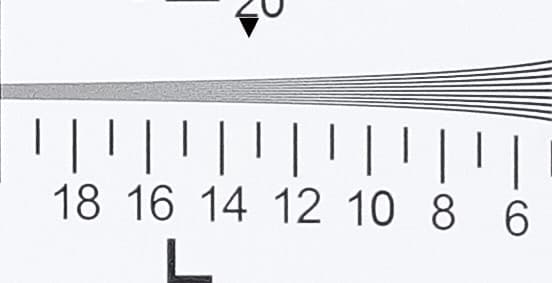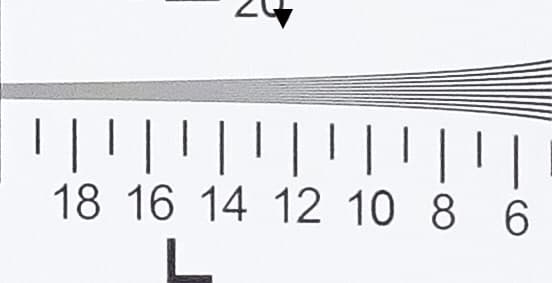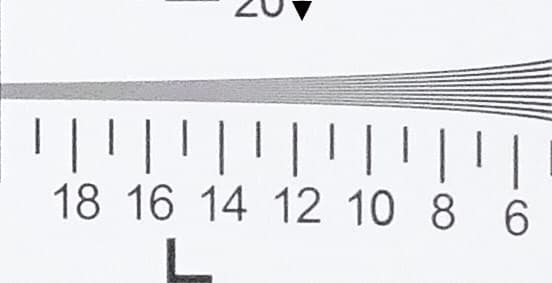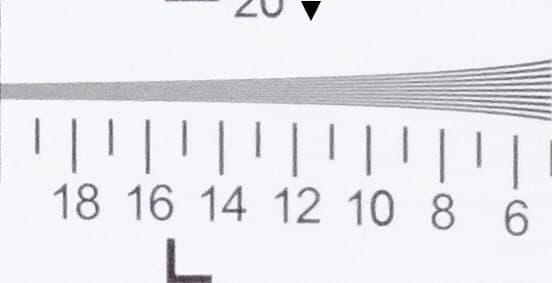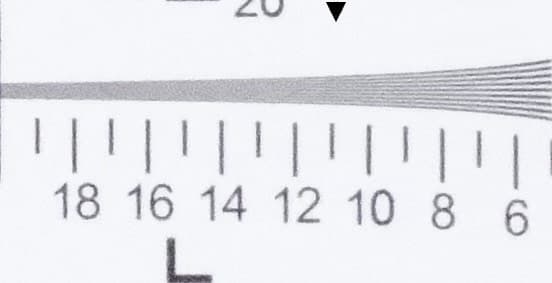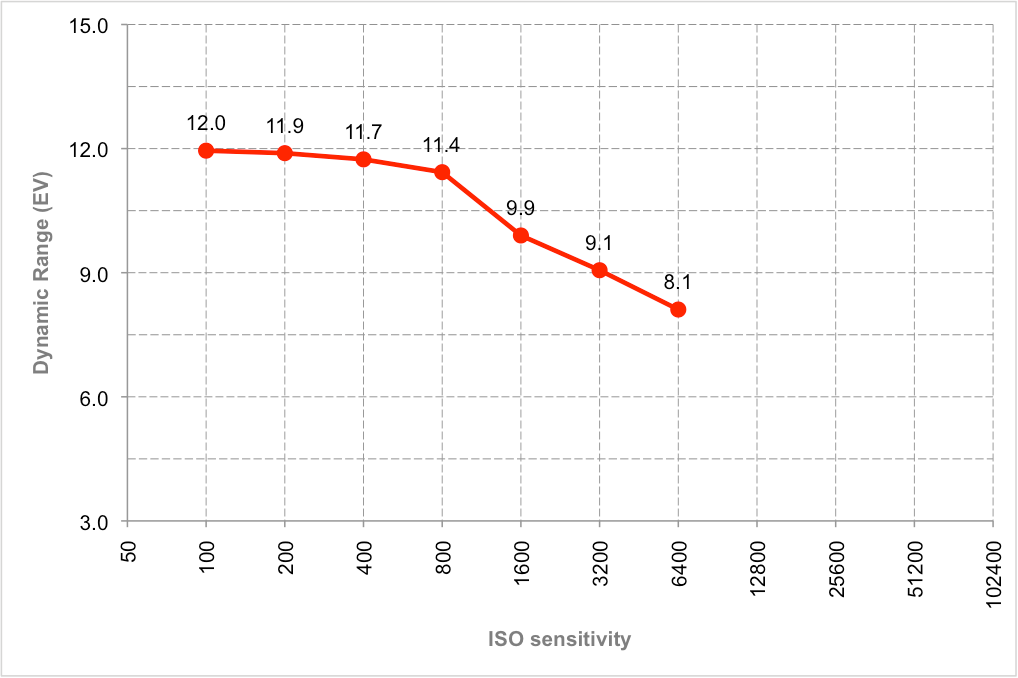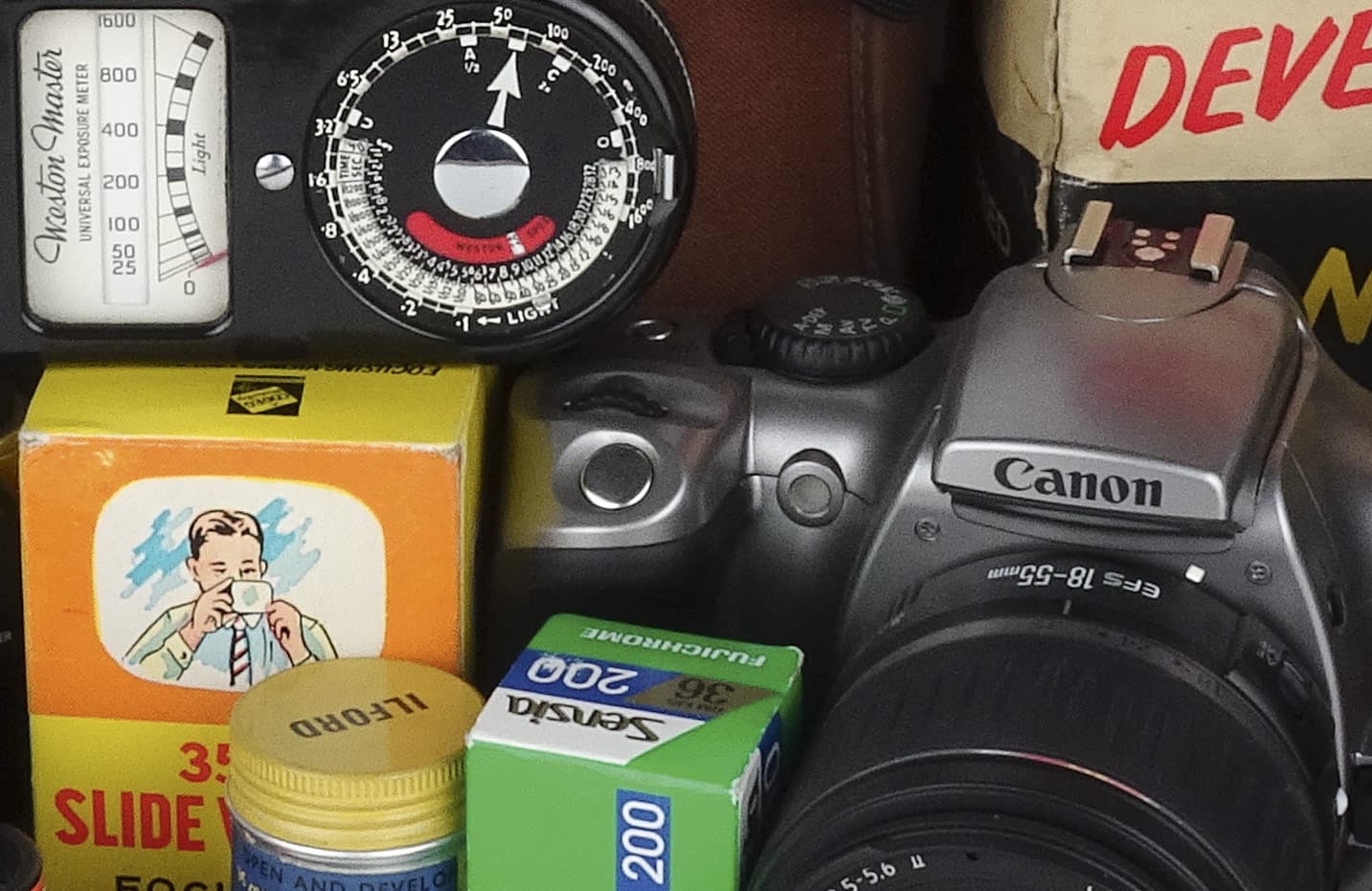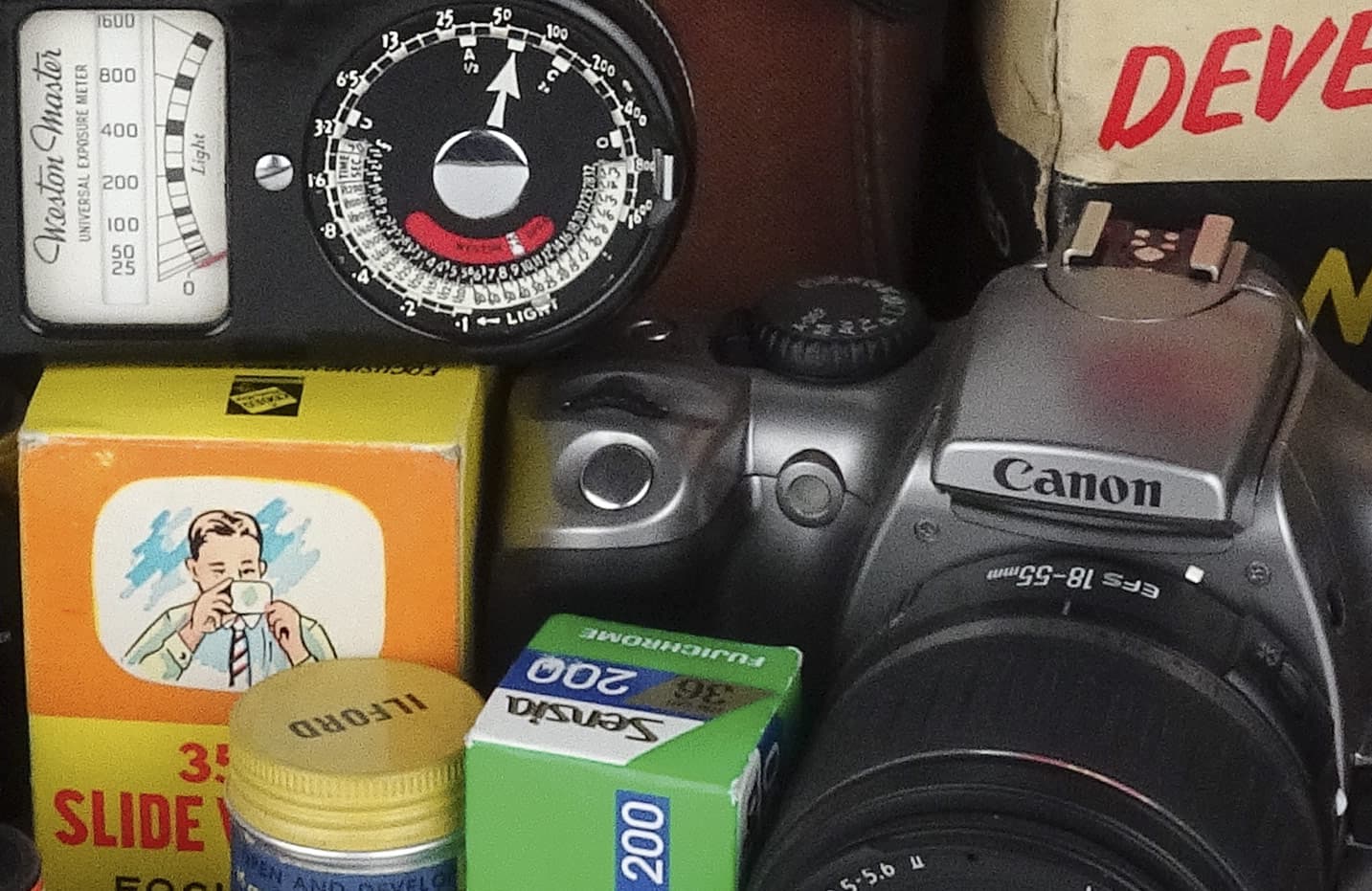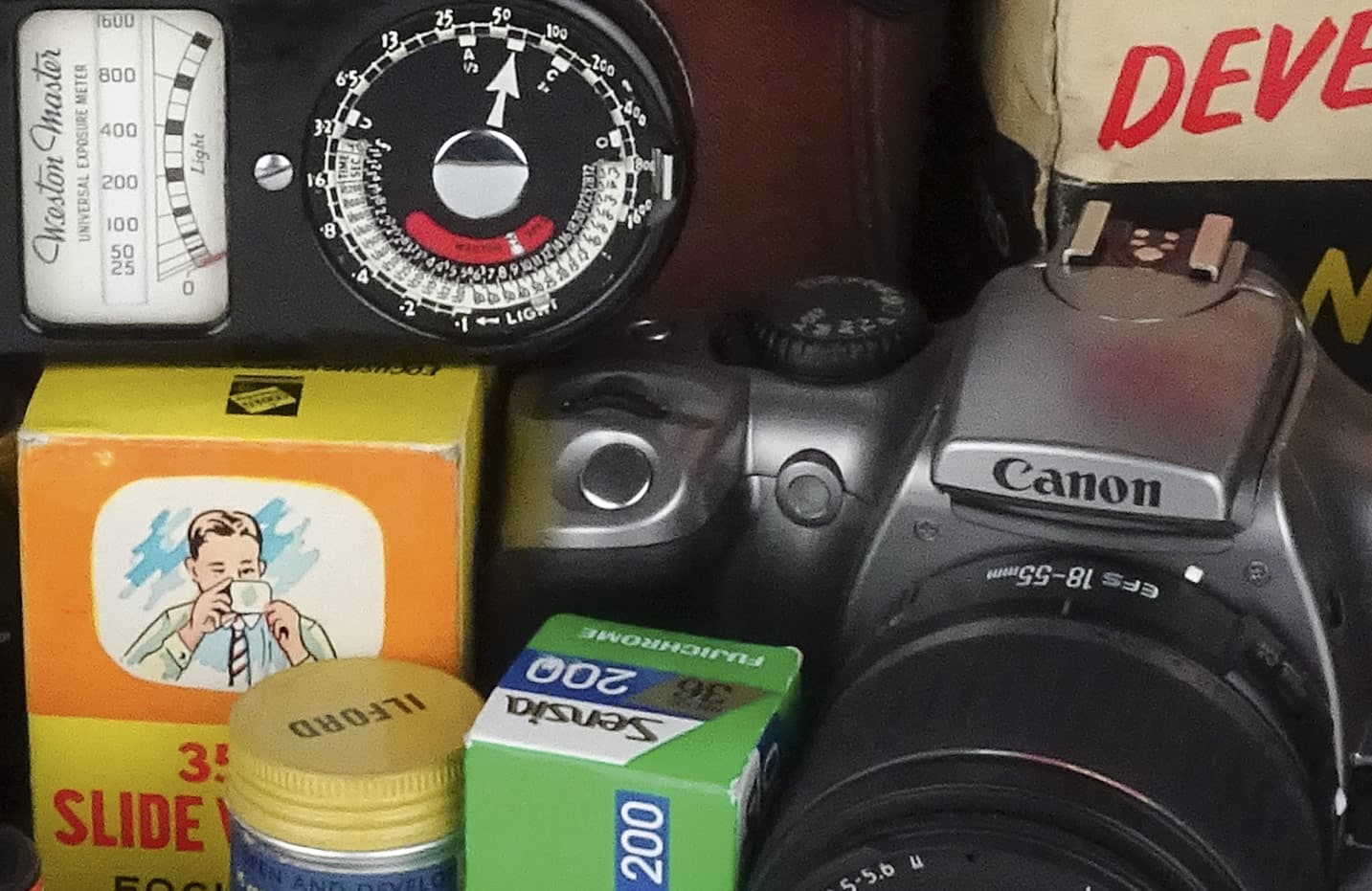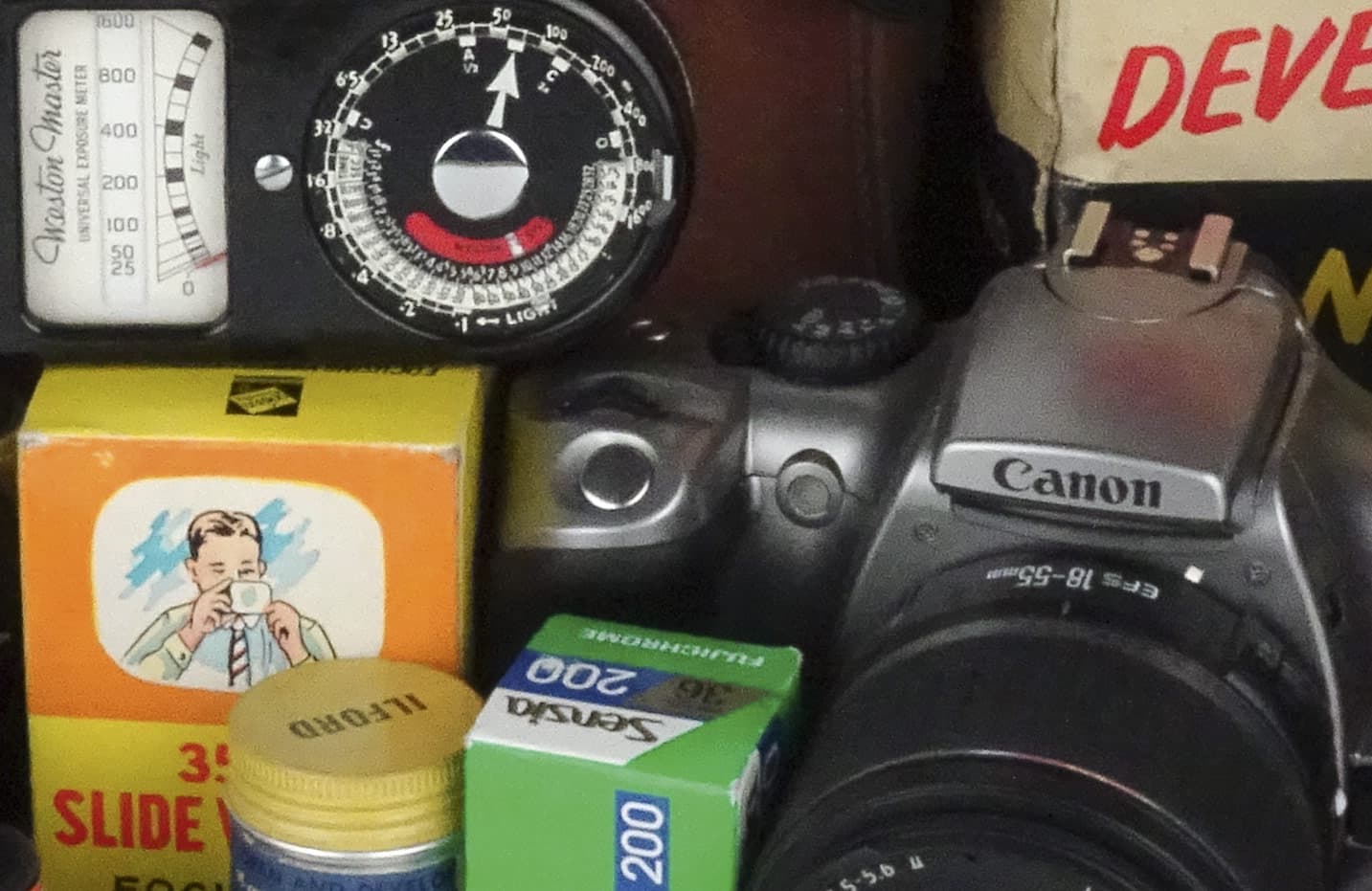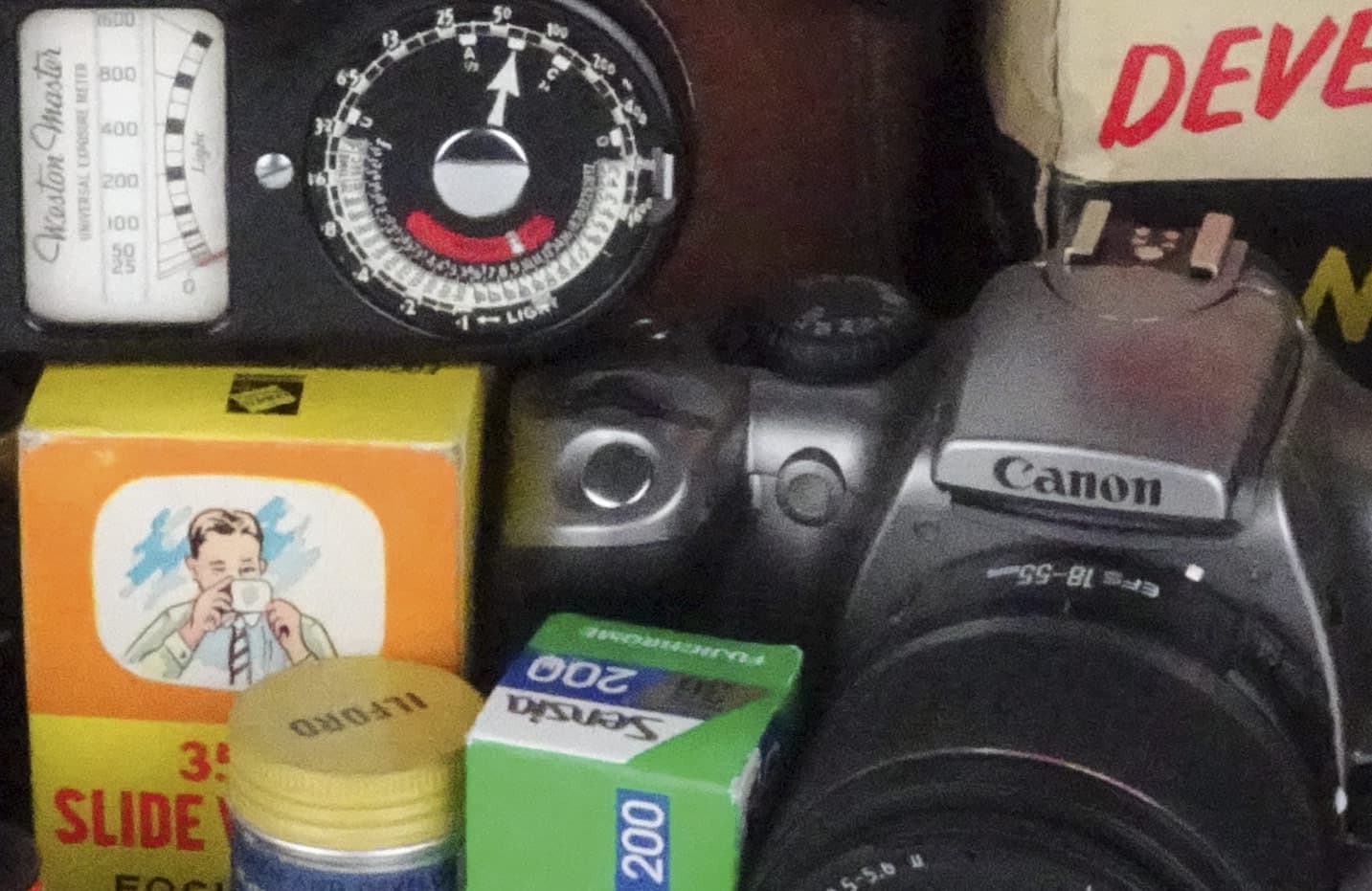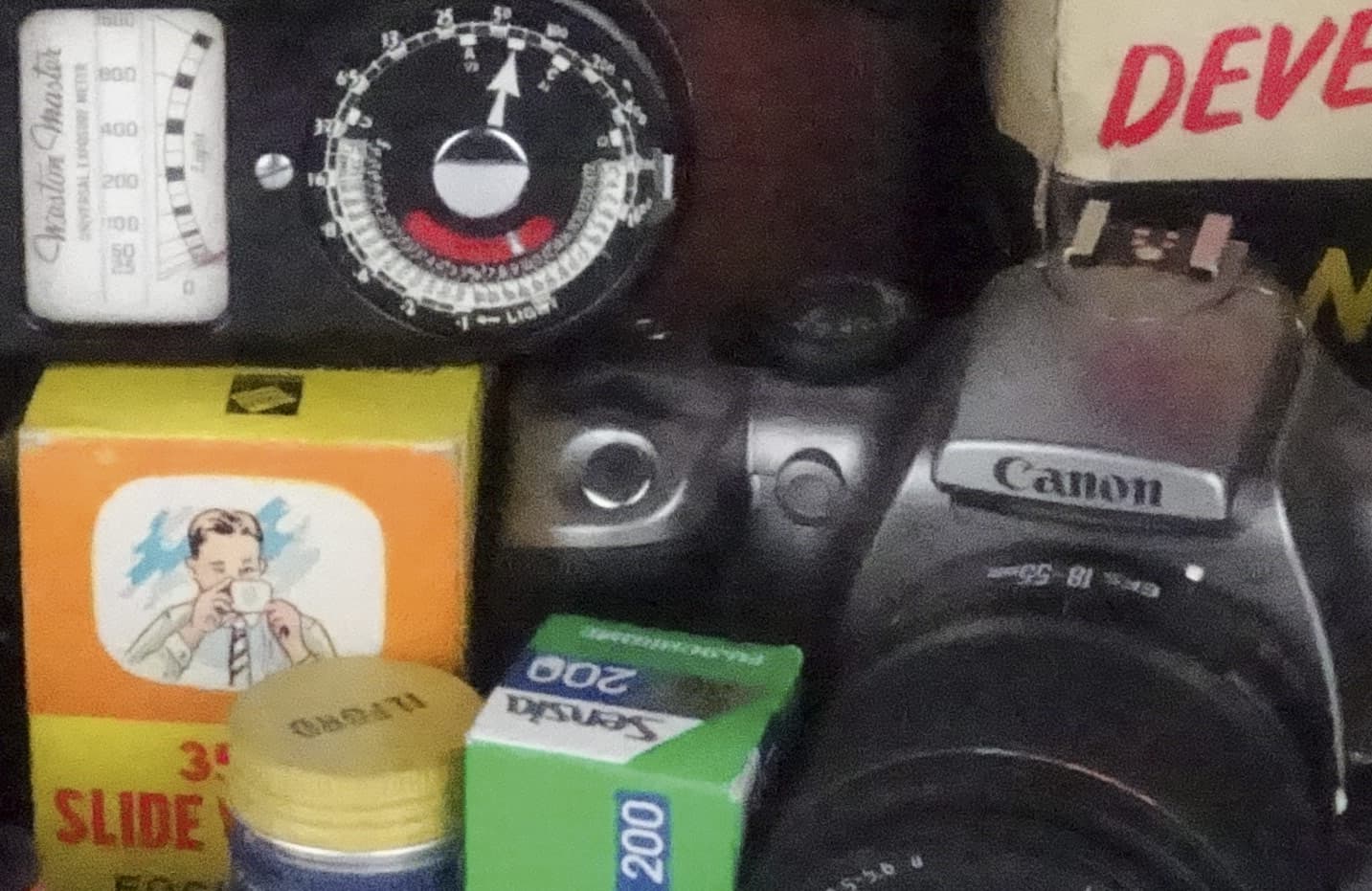Sony Cyber-shot HX90V at a glance
- 18.2MP, 1/2.3in Exmor R CMOS sensor
- 24-720mm (equivalent) f/3.5-f/6.3 lens
- 3in 921,600 dot tilting LCD
- 5-axis image stabilisation
- New sleek, lightweight design
- Built-in EVF
With the rise in popularity of smartphones, sales of compact cameras have steadily declined. However, there are a few compact camera ranges, such as tough cameras and travel zooms, that still thrive, as they provide something that smartphones cannot.
The Sony Cyber-shot DSC-HX90V falls into the travel zoom category, with its seriously impressive optical zoom range of 24-270mm (35mm equivalent) inside a newly designed body that takes inspiration from Sony’s Cyber-shot DSC-RX100 III. The HX90V is smaller than its HX60V predecessor, and it promises better image quality and extra functionality, such as a tilting LCD screen and pop-up electronic viewfinder.
Sony Cyber-shot DSC-HX90V Review – Features
The Sony HX90V has an 18.2-million-pixel, 1/2.3in, Exmor R back-illuminated sensor. This is a lot of pixels to pack in to a small area, but those who wish to make large prints will find it useful.
Rather than the Sony G lens found on the HX60, a Zeiss lens is fitted to the HX90V. This all-new Vario-Sonnar 4.1-123mm T* f/3.5-6.4 lens is 30% smaller than the previous optic thanks to new aspherical elements and a floating rear optical group. With a 30x optical zoom (24-720mm equivalent focal length), the HX90V packs an extensive zoom range for a camera of this size, and allows users to cover every focal length a photographer is likely to need. Of course, at 720mm there’s a risk of camera shake, but Sony has used Optical SteadyShot 5-axis stabilisation to steady the image.
The HX90V’s sensitivity range of ISO 80-3200 can be selected either manually or it can be automatically determined using the auto ISO setting. There’s also the option for multi-frame noise reduction, which blends three images together to minimise image noise. Sony has said that the Bionz X processor inside the HX90V has improved in-camera noise reduction over the HX60, which is very important as the HX90V is a JPEG-only model and cannot shoot in raw format. This is where its most direct competitor, the Panasonic Lumix DMC-TZ70, has the advantage with its ability to capture raw files (see here for a comparative look at the HX90V and the TZ70). In burst mode, the Bionz X processor allows a speed of 10 frames per second for a total of ten images.
One of the standout features of the HX90V is the addition of a pop-up OLED electronic viewfinder with an impressive 638,400-dot resolution, which is similar to the one found on the RX100 III. The HX90V’s LCD screen has also been overhauled, with a new tilting screen fitted that flips upwards for taking self-portraits. When it is in self-portrait mode, the camera uses a 3sec timer to capture the perfect picture. The resolution of the LCD remains the same as the HX60’s, boasting 921,600 dots on the 3in display.
Video can be captured at a maximum resolution of 1080 x 1920 pixels, with a maximum frame rate of 60/50p, while other resolution and frame rates are available. However, with the redesigned body there’s no multi-interface hotshoe, so Sony’s microphone accessories can’t be used with this camera.
As you would expect from a Sony camera, there’s a comprehensive range of connectivity options, including Wi-Fi and NFC. Using the Sony Play Memories app, users can connect the camera to their smartphone or tablet, share their images or even remotely access the functions of the camera through the app. This includes the ability to change settings remotely without touching the camera.
Many photographers will use the HX90V while travelling, which is why it has a built-in GPS system that allows users to geotag their images so they know where they were taken. However, for users who don’t want this, the HX90 model is exactly the same camera but without GPS functionality for £30 less.
Build and Handling
Compared to its HX60 predecessor, the HX90V has changed significantly in its build. The new camera looks more like the Sony RX100 III than the HX60. The HX90V has shrunk quite significantly in size to just 102 x 58.1 x 35.4mm. With the HX60, you would need a large pocket in which to carry the camera, but with the HX90V I found I could place it in the pocket of a pair of jeans without noticing it was there. Also, the HX90V weighs just 245g with battery and card, so it’s not very heavy. A large raised grip on the front offers an easy way to hold the camera even with one hand. The grip isn’t cumbersome, either, so it doesn’t impede the camera’s pocketability.
The control layout of the new model is similar to that of the RX100 series, with a near identical button layout to the RX100 III. On the rear of the camera is a multi-function scroll wheel. This can be used to scroll through settings, but it also doubles as a directional control for navigating through the menus as well as having button functions in shooting mode. Tapping the Fn button brings up the function menu, which has 12 core settings such as ISO, drive mode, AF area and picture style.
All these settings can be customised from within the main menu to suit the user. Settings such as aperture and shutter speed are controlled with either the scroll wheel at the rear of the camera or the round-lens control ring. It’s worth noting, though, that the control ring is electronic and there’s no nice mechanical click when changing any settings – something that some users like and others don’t.
Unfortunately, in making these changes, Sony has done away with the exposure-compensation dial and multi-interface hotshoe found on the HX60V. This means Sony’s multi-interface hotshoe flashes and microphones cannot be used on the HX90V as they can on the HX60.
Performance
In good light, the HX90V snaps to focus almost instantly right the way through the focal range. In low light it is slower, as expected, but it is still an impressive speed. Even at extended focal lengths it usually found focus in less than 1sec, and there is a small AF assist beam that helps focusing speed in low light. There is the option of continuous autofocus (AF-C), but this is reserved for video mode only and not available for still images. There’s a good feature set for manual focusing, allowing focus peaking, focus enlargements and precise adjustment of manual focusing via the round-lens control wheel.
With any camera that shoots JPEG only, it is important that the white balance is correct and the colours are accurate in-camera. Thankfully, the HX90V is fairly consistent in both these areas, giving a good colour rendition and accurate results even when a scene is lit with varying-temperature light sources.
Sporting both a high-resolution tilting LCD and a high-specification OLED EVF, the HX90V is without a doubt the best incarnation of the HX series for composing images. It’s great to see an electronic viewfinder on a travel camera, as it’s likely many photographers will be using the camera in bright conditions where it may be difficult to see the LCD. In use, I found the EVF offered a bit too much contrast and it is rather small too, but it is still a brilliant feature. However, compared to the Panasonic TZ70, the Sony HX90V’s viewfinder is larger and more pleasant to use.
With a small sensor, the dynamic range of the HX90V is obviously limited and in a lot of high-contrast scenes there is some highlight or shadow clipping. The metering system gives accurate exposures in spot, centre and multi-metering settings and overall very few adjustments are needed.
Image Quality
See more in our Sony HX90V sample image gallery
With its small sensor, we don’t expect the Sony Cyber-shot DSC-HX90V to achieve outstanding image quality. However, taking the 18.2-million-pixel, 1/2.3in Exmor R sensor into consideration, the image quality is rather good. The caveat is that JPEG-only shooting limits the images to the effectiveness of the BIONZ X processor. Up to ISO 800, the camera does a reasonable job of both detail and resolution, while past this the images become very mushy when viewed at pixel level.
Resolution
JPEG images resolve 2600/lpph at the lowest sensitivity of ISO 80, which is what we expect to see from a small sensor such as this. The images for the resolution chart were shot at a 35mm equivalent focal length of 50mm at f/4.5 aperture. At ISO 800 the camera scores a resolution of 2200l/ph and drops to around 1800/lpph at the maximum ISO of 3200.
Dynamic Range
With no raw image recording on the HX90V we’ve looked at JPEG files in our Applied Imaging tests. Due to noise reduction the numbers are artificially high, and can’t be compared to other cameras. But they do show that image quality falls very rapidly at settings higher than ISO 800.
Noise
At sensitivities between ISO 100 and ISO 400, images appear very good even when previewed at 100%. The new in-camera processing reduces noise, but leaves enough behind to retain some of the finer details. At ISO 800, we start to see detail rather heavily breaking down and the top two ISO sensitivities of ISO 1600 and 3200 are very noisy and contain very little detail.
Verdict
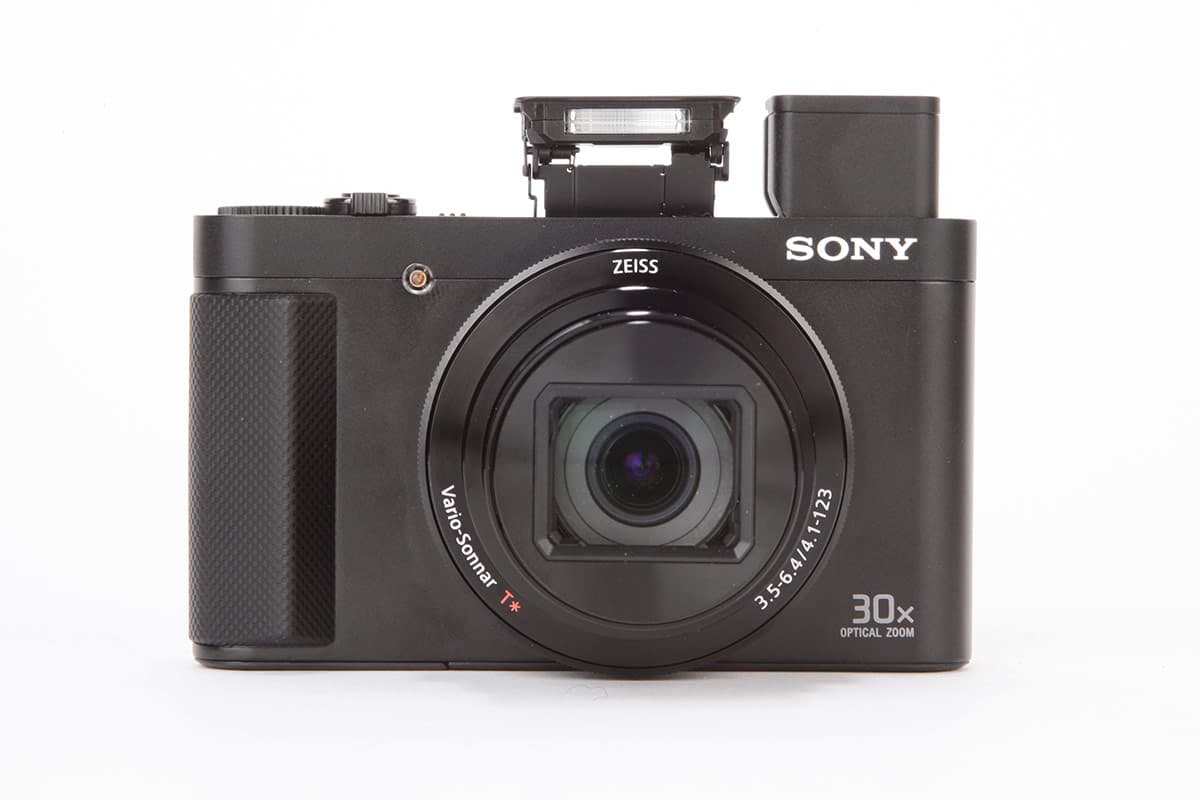
Given that it sports a range of features that should appeal to many discerning enthusiast photographers, it’s an unusual step for Sony not to include raw shooting in the HX90V. It’s something that may be a deal breaker for many people and edge them towards the Panasonic TZ70. However, thanks to Sony’s new in-camera noise reduction, the smoothing of noisy areas isn’t anywhere near as extreme as it was on the HX60, which has resulted in great improvements to JPEG image quality. When viewing files at pixel level there is more luminance noise, but there is also far more texture and detail that results in better-looking images.
The structural overhaul of the HX90V has both good and bad points. There is no hotshoe and no exposure-compensation dial, and users have to dive into a menu to change many of the settings, which may be off-putting to some. However, the type of user who is likely to buy this camera will think this is a worthy trade-off for the reduction in size and weight of the new model. The HX90V is now truly pocketable and will go practically unnoticed inside a trouser pocket, which is a big advantage over both the HX60V and other travel compacts on the market.
While the HX90V is not perfect, if I were in the market for a travel compact to take on holiday with me right now, this is the one I would choose.

